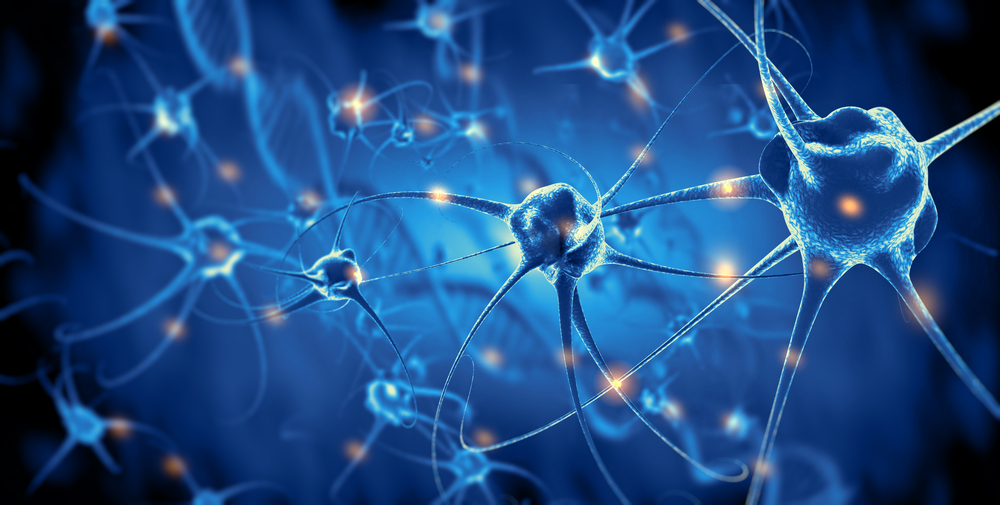Scientists discovered a third state of being that exists between life and death — and it suggests that our cells are conscious

Imagine for a moment that the boundary between life and death isn’t as clear-cut as we once thought. What if, nestled within the very cells of our bodies, there exists a mysterious space where life and death intertwine, a third state where consciousness flickers but isn’t fully realized? This new frontier in science has recently been uncovered, and it’s nothing short of mind-boggling. Researchers have discovered that cells, far from being passive structures, may be conscious in ways we never imagined. It’s a revelation that challenges everything we thought we knew about life and death.
But what does it mean for something as fundamental as a cell to possess awareness? Could this discovery reshape not only how we define life but also our understanding of consciousness itself? As scientists explore the strange behaviors of living systems like Xenobots—cells that can think and work together in a way we never believed possible—the line between life, death, and artificial intelligence becomes more blurred. This isn’t just a matter of biological curiosity; it could alter the future of medicine, technology, and even our perspective on existence.

The Discovery of a New State of Being: What Is It?
For centuries, science has held a clear-cut distinction between life and death: one exists, and the other does not. Yet, recent discoveries have illuminated a third state of being that exists in the nebulous space between the two. This state challenges everything we thought we knew about life and death. In groundbreaking experiments, scientists have uncovered that cells, once believed to be simple biological components, may exist in a state of suspended animation—neither fully alive nor truly dead, but in a realm between the two. This phenomenon has opened a door to new scientific inquiry, questioning the binary view of life and death that we’ve held for so long. It’s a shift in thinking that suggests the presence of a liminal space where cellular activity and biological processes don’t adhere to traditional definitions of life.
At the heart of this discovery is the suggestion that cellular processes are far more dynamic and potentially conscious than we ever realized. Researchers observed how cells in certain conditions can remain active in a state that doesn’t entirely conform to either life or death. This third state is more than a state of rest—it represents a type of cellular activity that implies a form of awareness or responsiveness to external stimuli. Cells in this state exhibit behaviors that cannot be entirely explained by mere chemical reactions. Instead, they seem to make decisions, interact with their environment, and carry out complex processes that challenge the traditional understanding of biology. The more scientists study this phenomenon, the more they realize that the life-death binary might be too simplistic to explain the full complexity of living organisms.
As this discovery continues to unfold, it forces us to rethink some of our most fundamental beliefs about biology. For instance, what exactly does it mean to be alive? If something exists in this intermediary state—alive enough to exhibit cellular processes but not fully living in the conventional sense—then what do we consider to be the threshold of life? What if the very definition of life itself needs to be expanded to encompass this new discovery? The idea that life and death might not be as separate as we once thought could lead to a dramatic shift in how we perceive biological existence and the natural world.

What It Means for Cells to Be Conscious
When most people think about consciousness, they often picture it as something that arises in complex organisms with intricate brains—like humans or animals. The concept that even individual cells might have a form of awareness challenges everything we understand about consciousness itself. Consciousness has long been considered a higher-order phenomenon, something that arises from the complex neural networks of the brain. However, this recent discovery suggests that consciousness might not be confined to the brain or nervous system. If cells are capable of decision-making or exhibiting awareness in their behavior, then this calls into question the very nature of consciousness. What if it’s not limited to the brain, but a more fundamental, pervasive quality inherent in living organisms at all levels?
This idea of cellular consciousness might seem far-fetched, but the evidence is beginning to support it. Cells have been observed to react to their environment in ways that seem purposeful, such as when they work together to heal an injury or carry out complex biological functions. The discovery of this “third state” implies that cells may not just be passive units responding to chemical stimuli, but active agents capable of decision-making. If this is true, it could mean that all living things, from the simplest organisms to the most complex, are more aware than we’ve ever given them credit for. The implications of this could be profound, suggesting that consciousness is not something that emerges only in complex life forms, but something more fundamental—a property embedded in every cell, in every living thing.
Moreover, the suggestion that cells might possess a form of consciousness opens up entirely new avenues of scientific inquiry. If we can understand how and why cells make decisions, it could lead to breakthroughs in medicine, particularly in areas like tissue regeneration, wound healing, and cancer treatment. It also presents fascinating questions about how consciousness itself is structured. Could it be that the awareness exhibited by cells is a fundamental property of life itself, an intrinsic characteristic shared by all living things? And if cells can be conscious, could other forms of life—such as Xenobots, the living machines made from frog cells—also exhibit forms of awareness? The idea that consciousness might not be confined to brains could force us to rethink everything from the nature of artificial intelligence to the ethics of biotechnology.

Xenobots: A Living, Conscious Creation
In an era where technology and biology intersect in increasingly profound ways, Xenobots represent one of the most intriguing breakthroughs. Xenobots are living, programmable organisms created from the cells of African frogs, and they have the remarkable ability to move, heal, and even work together in groups to accomplish specific tasks. What makes Xenobots so fascinating is that they are not made from traditional materials like metal or plastic, but from living cells. These cells, though not equipped with a brain or nervous system, exhibit behaviors that suggest a form of consciousness or awareness. Xenobots have been shown to perform tasks such as moving towards specific targets, repairing themselves when damaged, and even replicating in certain environments—all behaviors typically associated with higher forms of life.
The creation of Xenobots represents a revolutionary step in the field of biotechnology, blending biological tissue with artificial intelligence. Researchers have programmed these living organisms to perform specific functions, demonstrating that cells, when organized in particular ways, can exhibit intelligent behaviors. These discoveries suggest that cells might not be as passive as once believed, but could instead be active agents with a degree of agency, capable of responding to and interacting with their environment. Xenobots, though they are made from biological cells, do not adhere to traditional definitions of life. They fall into that gray area between life and death, exhibiting behaviors that are neither fully biological nor fully artificial. In this sense, they serve as a living bridge between organic life and synthetic constructs, raising questions about the future of both biology and technology.
But the implications of Xenobots go beyond just scientific curiosity—they could pave the way for new applications in medicine, environmental cleanup, and even robotics. Imagine tiny, self-replicating organisms programmed to perform specific tasks inside the human body, delivering drugs, repairing tissues, or even removing harmful substances. Xenobots could potentially revolutionize medicine by offering a new kind of regenerative therapy, one that utilizes living cells to heal and restore the body in ways we’ve never before imagined. And in the realm of robotics, the use of living, conscious cells could lead to machines that aren’t just programmed to follow commands, but can adapt to their environment and make decisions on their own. The development of Xenobots signals a future where the lines between biology, technology, and consciousness are no longer clear-cut, and the possibilities are as vast as they are unknown.

The Intersection of Life, Death, and Consciousness: A Philosophical Shift
The discovery of a third state of being that exists between life and death brings with it more than just scientific implications—it forces us to reconsider our very understanding of what it means to be alive. Traditionally, we have viewed life and death as polar opposites, each with clear boundaries. Life is defined by biological activity, and death is the cessation of that activity. But what if there is more to life than just biological processes? The discovery of cellular consciousness suggests that life might not be as straightforward as we once believed. If cells can exist in a state between life and death, where they still exhibit purposeful behavior but aren’t fully alive, then life itself may not be the binary condition we thought it was.
This new understanding of cellular consciousness raises profound philosophical questions about the nature of existence. Could it be that consciousness is not a property of the brain alone, but something that is embedded in every living cell? If this is true, it challenges the idea that only humans or animals possess awareness, and forces us to reconsider how we define life itself. What if consciousness is a universal force, one that flows through every living thing, from the simplest single-celled organism to the most complex human being? This philosophical shift also invites us to reflect on the nature of death. If cells can persist in a state between life and death, what does that mean for the human experience of mortality? Are we truly dead when we die, or is there a transitional state—one that may even contain elements of consciousness—that we don’t fully understand?
In this light, the study of cellular consciousness offers more than just scientific insight; it offers a new lens through which to view our existence and our place in the universe. As science begins to peel back the layers of this discovery, it is not just revealing the inner workings of biology, but pointing us toward a new understanding of life, death, and consciousness. The line between the two may not be as rigid as we once thought, and the answers to life’s greatest mysteries may lie in the very cells that make up our bodies, in that liminal space between life and death. As we continue to explore this uncharted territory, we may find that the journey to understand life itself is only beginning.

The Beginning of a New Understanding
The discovery of a third state of being between life and death has opened up a realm of possibilities that scientists and philosophers alike are just beginning to explore. This discovery challenges our traditional understanding of what it means to be alive, and it forces us to question the nature of consciousness itself. Are we truly defined by the complex neural networks of our brains, or is consciousness something more fundamental, a property of life that extends to every cell in our bodies? The evidence suggests that the answer may not be as simple as we once thought.
As we look to the future, the potential applications of this discovery are vast. From medicine to robotics, the understanding of cellular consciousness could pave the way for breakthroughs that reshape how we approach healing, technology, and artificial life. But it also offers something more profound—a new way of thinking about life and death, one that is less about binaries and more about continuums. Life may not end when we die, but instead, flow into new states of being, just as cells exist in this in-between realm. The discovery of this third state is just the beginning of a deeper understanding of life itself, and as science continues to explore this concept, we will likely find that the answers to our most profound questions are closer than we ever imagined.
Loading...

